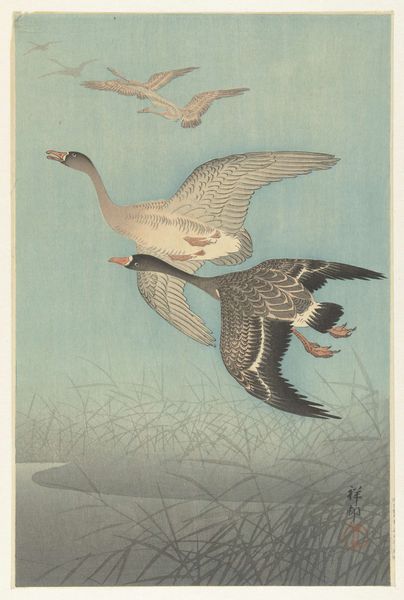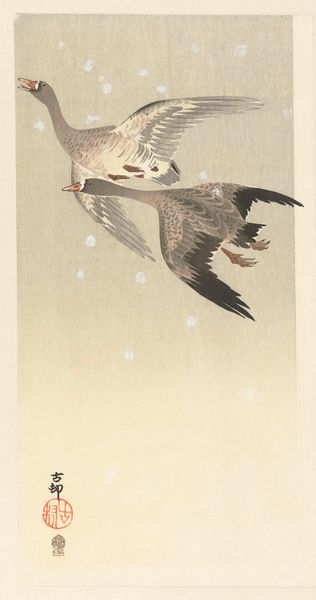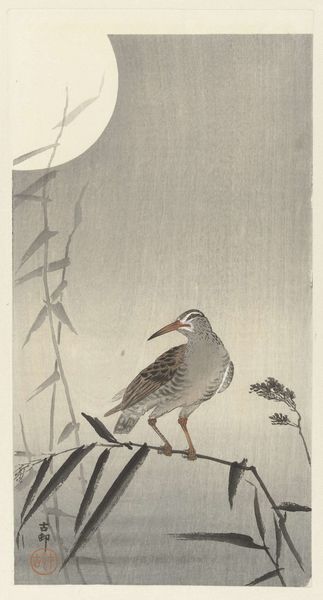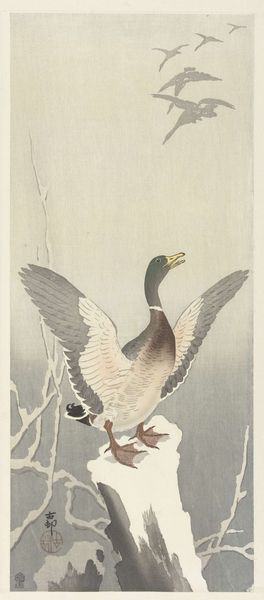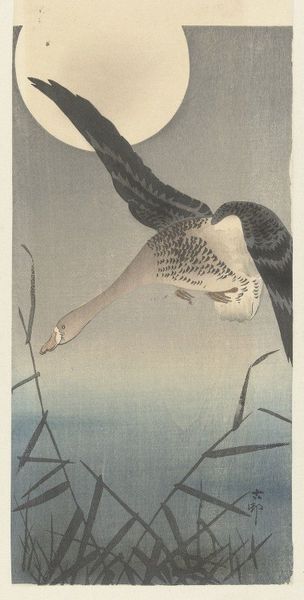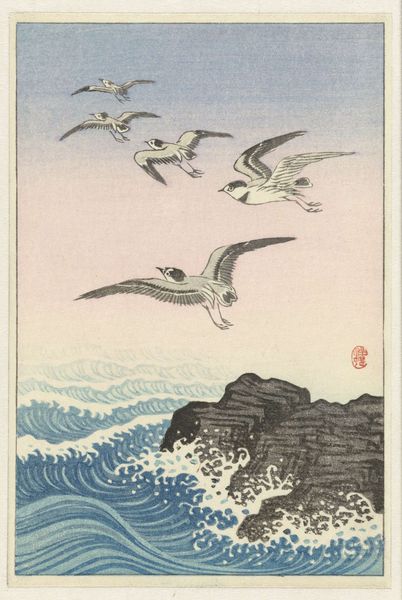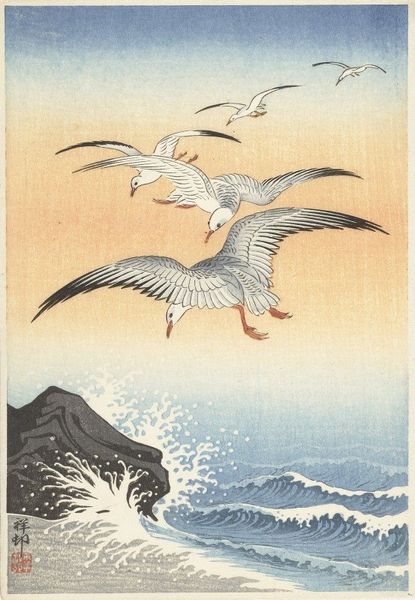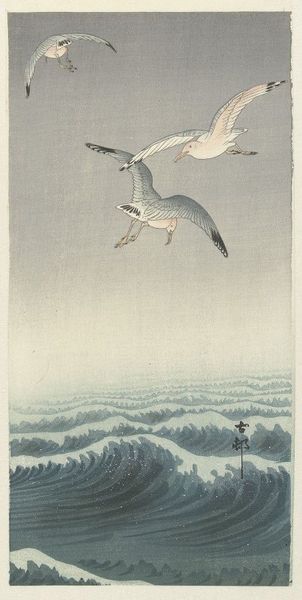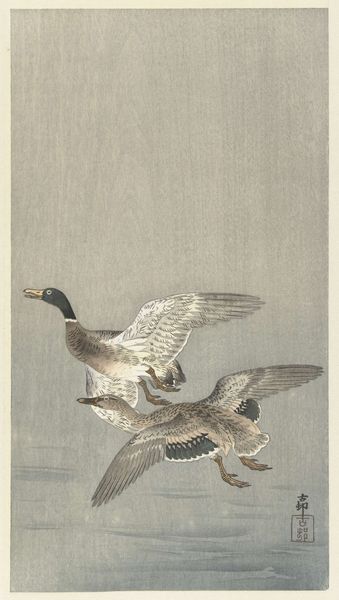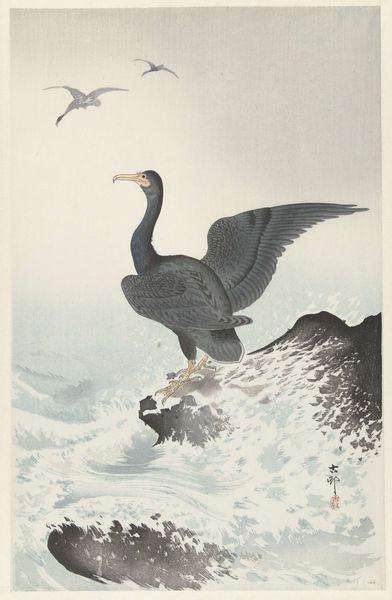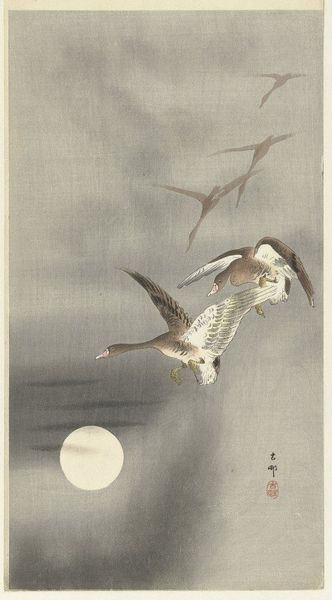
Copyright: Public Domain: Artvee
Curator: This woodblock print, "Seagull on Rock," by Ohara Koson, made sometime between 1900 and 1910, presents a tranquil coastal scene. What strikes you initially? Editor: The stillness is profound, almost unnerving. Even with the depicted motion of the waves, and the suggestion of air by the flying birds, the piece feels very self-contained and introspective. There is no visible horizon and the image is flattened. The limited tonal range certainly reinforces this sense. Curator: Yes, it's a study in restraint. Koson manipulates line and color to create depth and movement, even as the composition remains relatively flat. Observe the precision of the linework in the feathers of the central seagull against the abstract splash of the water, and how it juxtaposes solid form and ephemerality. Editor: That ephemerality reads more politically to me. I can't help but see a metaphor for the precariousness of existence in the face of overwhelming forces – economic instability, environmental threats... The singular gull confronts this immense, unpredictable body of water. Curator: I appreciate that reading, although the aesthetic qualities suggest a controlled rendering. I find Koson highlighting formal tensions. Look, for instance, at how he creates a contrast between the solidity of the rock and the fluidity of the sea. It's this kind of precise relationship of forms that lends structure and coherence to the image. Editor: Right, but that sense of control also evokes something more sinister, no? Historically, who is it who has had the means to shape and contain unruly nature? Curator: While that viewpoint certainly speaks to our contemporary sensibilities, viewing the work in that frame neglects, perhaps, the traditional conventions of ukiyo-e art with its celebration of the natural world and its emphasis on the artist’s compositional skill. Editor: But should art, particularly art dealing with such stark natural forces, be hermetically sealed from reflecting or responding to societal power dynamics? Doesn't Koson’s selection of imagery speak directly to these themes, regardless of intended interpretation? Curator: These alternative interpretations enrich our understanding and offer new perspectives, moving beyond solely aesthetic parameters. Thank you. Editor: And the interplay between form and context remains compelling. I have renewed insight from our conversation.
Comments
No comments
Be the first to comment and join the conversation on the ultimate creative platform.
